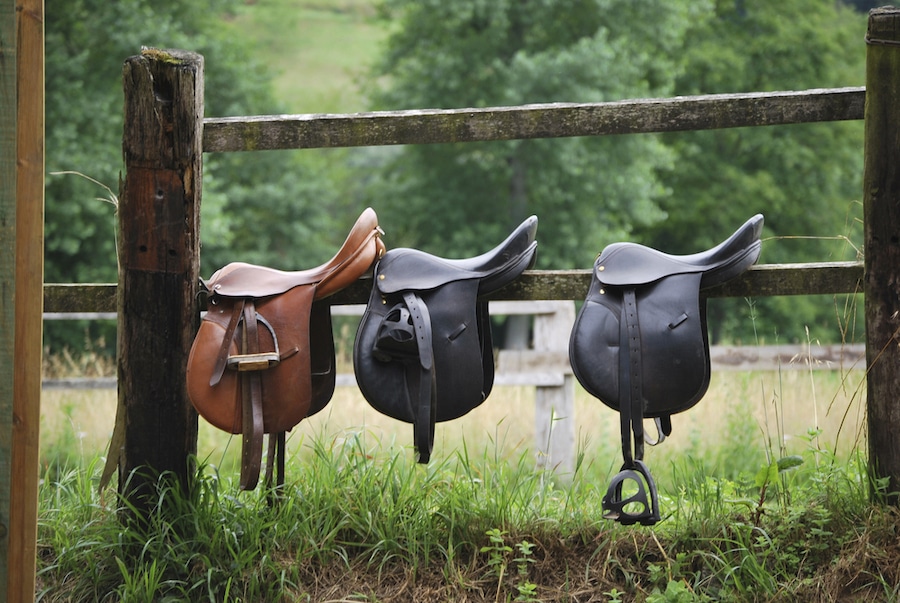Understanding horse biomechanics is understanding the biological movements that contribute to the riding process.
The act of riding a horse is challenging and unnatural for both the horse and rider. The sport itself demands a great deal from both its participants, bringing to light questions regarding the most effective methods of training, riding, and how to maximize safety and longevity of both parties involved.
While it may sound intimidating at first, the answer to these questions often lies in the biomechanics at work in the background. When taken apart into its smallest elements, equestrian biomechanics no longer becomes a complex topic, but rather, a very logical one.
Grappling with Natural Asymmetry
Nature is not symmetrical. While we might look more or less the same on both sides of our body, closer inspection reveals otherwise. Perhaps we carry more weight on the right side of our bodies, consistently lean on one leg, or sit with a posture that is too far forward or shifted to one side. All of these imperfections go under the umbrella of naturally occurring asymmetry.
Unfortunately, asymmetry means we also are going to suffer from poorer core strength and overall less sturdy riding stance. For horses, this lack of symmetry could cause joint issues and increased rate of injury over time, especially when paired with riders who do not take this into account when training.
Now, there is no way to physically change ourselves to be more symmetrical. What we can do however, is take the time to work on a stable riding posture and practice exercises with our horses to improve their stability and range of movement.
Some concepts to keep in mind for both yourself and your horse are listed below.
Keep Your Horse Sturdy Yet Supple
Ensuring your horse is riding in the ideal position is one of the most effective preventative measures equestrians can take against injuries and early burnout. One of the core concepts to work on is the straightness of your horse in a variety of different gaits.
The way horses are built, they usually have a “stiff” and “hollow” side. These sides correspond to which side they bear the most weight on. You can tell which side of your horse is stiff by looking at the direction they normally carry their head — the flexed side of the neck is the stiff side, the concave is the hollow.
If not corrected, an uneven horse can suffer from stiffness, muscle tears, joint problems, and poor propulsion.
To ensure the straightness of your horse, it’s important to work on suppleness first. This is the building block to having the head, shoulder, and legs all in alignment. Generally, exercises for lateral and horizontal suppleness such as travelers, shoulder-in, and half-pass work is recommended.
As your horse becomes more supple, it is easier to guide them into the correct riding position.
Training the Human Alignment
While horse biomechanics relies on stability, the same is true for the rider. This is known as alignment.
Interestingly enough, many of the same mechanics that make a sturdy martial artist also make a sturdy equestrian. This is to say that in addition to training your leg, knee, and core muscles to grip the horse, you must also build an innate sense of balance between your spine, hips, and lower body.
To ensure proper alignment, start with the pelvis and work outward. This entails making sure you have square, even, contact with the saddle. Similarly, your legs should be evenly positioned beneath you and your spine should be stacked straight so as not to lean you forward or back. This posture can be achieved by imagining a string is pulling you up from the very center of your head.
Finally, the shoulders must be relaxed and squarely aligned, sitting right above the pelvis while neither forwards or back.
Benefits of Harmonization
While the above seems like quite a bit of training, it has distinct long and short-term benefits to your dressage performance. While this list is no-exhaustive, some of the most marked improvements include:
- Better stability in all gaits leading to less tension overall
- Improved movement from rider feedback and direction
- Improves the pushing and weight bearing power of the hindquarters
When your horse is straight, this has the added effect of making your own alignment far easier to sense and maintain. This is because a stable and straight horse provides important tactile feedback to the rider by way of feeling even saddle contact and even weight distribution between the stirrups.
Building the Optimal Training Space
Both riders and their animals have tendencies to be lopsided and have various personal weaknesses. As such, the secret weapon against this learning cure is ensuring you have a good practice arena that doesn’t contribute to your problems.
This is where footing and drainage begin to matter as they directly influence the stability of your ride.
Without the correct footing, you run the risk of exacerbating existing performance issues, creating greater challenges for your horse when learning new maneuvers. Over time, your horse can learn to overcompensate for incorrect footing, ultimately creating a riding problem in and of itself.
If you are unsure of where to begin with changing or enhancing your arena footing, you can see many of our articles and pages on the topics. This provides equestrians with starting resources to better understand arena composition, different materials, and the best choices for the type of riding you prefer.
Equestrians Advising Equestrians
At Performance Footing, we are equestrians first. As such, we know the needs of equestrians first had, experiencing many of the same challenges ourselves from learning the sport to maintaining our arenas. We take our practice, knowledge, and understanding to help bring other horse-lovers the best products, advice, and service Arizona has to offer.
Have a question? Check out our product pages and don’t hesitate to reach out. We will help point you in the right direction no matter what is troubling your arena.
